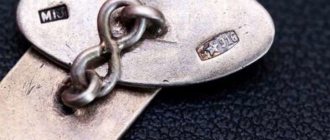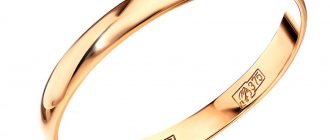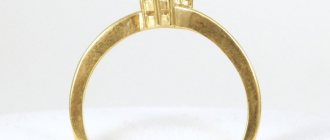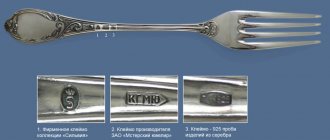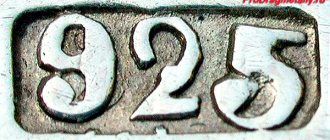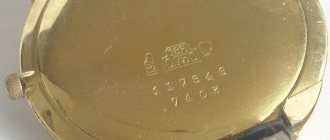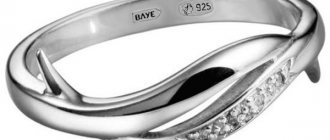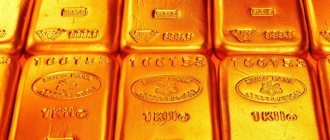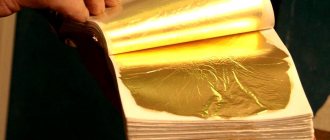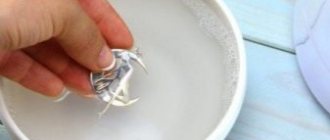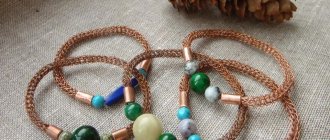Today, science knows more than 80 types of metals. And only eight of them are called noble. Next to gold and the six platinum group metals in this series, silver (argentum) rightfully stands. High ductility, excellent ductility and malleability, immunity to corrosion and oxidation are unique properties that determine its widespread use. Compounds of silver with other metals are especially often used. Thus, 800 sterling silver is often used for the production of cutlery, writing instruments, and decorative items.
800 sterling silver, what is it, what kind of metal?
800 silver is considered a low-grade alloy, which is used primarily for casting cutlery. The “800” stamp on the metal indicates that the product contains 80% pure silver, with the remainder being various impurities.
The alloy corresponds to 19 carats, 12.8 lots or 77 spools.
It is often called the “dining room”, and the peak of its popularity occurred during the reign of Catherine II.
800 silver spoon
Markings on silver spoons
Silver markings vary from manufacturer to manufacturer, but an hallmark is required. However, confusion may arise: for example, in the old days, the hallmark was set not only on silver, but also on silver-plated products.
And there are simply too many alloys similar to silver to count! If products made from them were produced in the Soviet Union or Russia, they will also be stamped (of course, without the coveted numbers):
- AL – aluminum;
- MELCH – cupronickel, an alloy of copper and nickel;
- MNC – nickel silver, copper and nickel plus zinc;
- MN – monel, cupronickel with a high nickel content;
- STAINLESS – “stainless steel”, that is, stainless steel.
Naturally, such cutlery is not silver and does not represent much value.
800 sterling silver: composition and properties
In its pure form, lunar metal is not used to create jewelry because it does not have sufficient strength. In order to change its casting properties, improve performance characteristics, and increase hardness, the metal is alloyed with various additives.
For 800 silver, the main alloying substance is copper. Sometimes the alloy also contains zinc, aluminum, and less often nickel. The amount of lunar metal in one kilogram of such an alloy is 800 grams, 200 grams are additives.
Due to the increased copper content, the alloy may have a yellowish tint, which is not typical for higher grades. Copper also helps to reduce anti-corrosion properties; the product quickly darkens from air and water environments.
What standard is the silverware?
The sample of table silver, in 90% of cases, has a sample size of 800; this alloy contains at least 80 percent pure silver, the rest is copper. Due to the high copper content, silver cutlery (silver spoons, knives, forks) have a yellow tint, this is not a defect, this is how silver cutlery should look.
Table silver 800
Silverware often has a hallmark (stamp) of 830. Therefore, silverware appears lighter and shinier, a seemingly insignificant difference, yet the effect is completely different.
Sample 830 for silverware
Sterling silver cutlery
As mentioned above, the most common standard of silverware is 800, but this only applies to the standard used in the Russian Federation and the CIS countries; the standard system has been in effect since 1927 and reflects the quantitative content of silver in the conglomerate. So, 800 silver standard is a compound in which 800 grams of argentum account for 200 grams of ligature. A hallmark is also called a mark affixed to a product.
The earliest such standard is the “sterling silver” standard (925) - this is the material for the best silver devices: durable and safest for health; in modern Russia, few manufacturers have such products in their line.
"sterling silver" (925)
For domestic goods (produced during the USSR period and in modern Russia), markings of the main alloy are typical (with, as a rule, 90 g of silver coating):
- MN or MELCH - cupronickel;
- MNC - nickel silver (analogue of cupronickel);
- AL - aluminum alloys;
- STAINLESS - stainless steel (usually uncoated; it is used for more expensive alloys, like cupronickel).
Cutlery and other items coated with silver and other precious metals are double marked: a mark + a mark of the base metal or alloy (as a rule, these are nickel silver and nickel silver cutlery). Like in this example -
Nickel silver device
All this is relevant for domestic products. However, you should be extremely careful with antiques, since among them there are often silver-plated objects with a mark indicating only the sample of a thin silver coating.
Alloys are gaining great popularity: 960, 925 samples.
The 875-grade alloy is used to make decorations, such as napkin holders, pepper shakers, salt shakers and other tableware items. Alloy 916 - for the production of tableware with enamel coating, alloy 960 - for the production of filigree products. In some countries, for example, in Italy, the surface of silver jewelry is additionally irradiated in order to give it resistance to oxidation.
Separately, it is worth noting that if you come across an antique spoon or fork, then the sample and marking mark used by the manufacturer or craftsman (artel). You can read more about stamps on antique cutlery here.
Antique Russian hallmarks of silverware
It should also be noted that each country essentially had its own hallmark designations; the main hallmarks of Russia and the CIS are discussed here, so if you come across silverware and you don’t find the answer here, then most likely this product was produced outside of Russia and post-Soviet space. For example, this is what a “German” brand looks like
German hallmarks and silver hallmarks
Sample 800: narrow application and wide distribution
The scope of application of 800 sample does not expand over time. The alloy is used to create products that must be durable because they will be subject to daily physical impact.
Cutlery made of 800 silver
Making silverware
Most often, the precious metal is used to make various cutlery.
How to distinguish silver from silver plating
The easiest way is to find a brand. Silver-plated items are not branded because too little precious metal was used to make them.
If there is no mark on your item, you can carefully look at its shape and condition. If the item is silver-plated, the coating in some places may have worn off or started to fall off - look for cracks and chips. Finally, jewelry made entirely of silver does not rust. If rust is noticeable on silverware or jewelry, it means that you are looking at silver plating.
History of hallmarks on Russian silver
Before the advent of assay supervision in 1700, in the territory of Tsarist Russia only silver products were subject to hallmarking. There was no single standard; artisans and large jewelry factories marked their products with their own mark. The stamp only indicated that the product was made of lunar metal.
The testing system established by Peter I remained virtually unchanged until 1917. According to Peter's decree, four gold and four silver standards were established. The decree protected the interests of bona fide producers, fair competition, and the state itself.
The mark of the tsarist era looked like this: first, the numerical value of the sample in the spool system was indicated, then - the imprint of the female profile in the kokoshnik, and lastly the initials of the foreman or plant manager were indicated. Often the year of manufacture was also indicated on the product.
The silver testing system changed with the Bolsheviks coming to power. The spool system was replaced by the metric system, and the woman's head was replaced by the worker's head. The marking system was revised again in 1958 and was not changed again until the collapse of the Soviet Union.
How to distinguish silver from fake
Contrary to popular belief, price is not always an indicator of quality. Real silver is not as expensive as many people think. So, a simple ring can be bought for only 1000 rubles.
Silver rings (go to the SUNLIGHT catalog)
First, you need to know how silver looks and behaves in its pure form. If your silver ring suddenly becomes very bent, do not rush to consider it a fake - in its pure form it is a very soft metal. Finding a hallmark will help you find out whether you were given a silver ring, as well as determine whether or not you got a silver spoon from your grandmother.
Silver products sold on the world market must be marked with a hallmark - three numbers. According to international standards, silver must be marked with the numbers 925, 900 or 800. 925 hallmark indicates that the product contains 92.5% silver, and 900 and 800 hallmarks indicate that 90% or 80% precious metal.
If there is no mark on your product, do not rush to get upset - it is quite possible that your jewelry was simply not created for sale. What other ways can you recognize silver at home? Let's figure it out.
Iodine
Identify silver using iodine
It is very easy to test silver at home using iodine. The main thing here is to be careful, since too much iodine can ruin the item.
So, how to distinguish fake from real silver using iodine? Dip a cotton swab in iodine, run it over the metal and quickly wash off the applied composition. If the jewelry is really made of silver, iodine will leave a dull gray stain on it - the darker it is, the higher the standard. Don't be afraid to ruin the item - if you wash off the composition quickly enough, the stain will soon disappear. If this is a fake, after checking it will have a white limescale residue on it.
Magnet
Since real silver is not magnetic, this test will take you less than five seconds. Take any souvenir from the refrigerator and bring it to the decoration. If a magnet attracts it, this is a fake. If the jewelry remains in place, you can be sure that it is real silver.
Vinegar
While at home, you can test your silver with vinegar. The instructions for such a check are quite simple:
- Lightly scratch the product with a needle and drop vinegar onto the scratch;
- If the scratch is covered with greenish foam, this is a fake;
- If there is no foam, and the scratch is covered with a white substance, it is real silver.
lapis pencil
Testing silver with a lapis pencil is one of the most reliable methods of checking at home. You can buy it at any pharmacy. To check, put on gloves and run a pencil over the jewelry. If after this a black stripe appears, the silver is fake.
Thermal conductivity
Silver has excellent thermal conductivity, so heating the jewelry can also serve as a verification of authenticity.
Dip the item in warm water or squeeze it between your palms to warm it up. After a few minutes, try placing an ice cube on it. If the ice begins to melt from the heat of the metal, it means that this is real silver.
Chalk
Recognize silver using chalk
Ordinary chalk will also help you recognize silver at home. Having almost the same properties as iodine, chalk can serve as an excellent assistant in safely testing silver for authenticity. Wipe the surface of the item being tested with chalk - if a black mark appears on it, it means the item is real.
Labeling in other countries
For European countries, branding begins earlier. Many of them indicate the fineness in carats. The lot or spool system for indicating the purity of the alloy is practically never used anywhere.
English
In the second half of the 12th century, many masters in England had individual marks. They could indicate them on the finished product only after checking by the guild of jewelers.
In 1701, assay offices opened throughout the country, making it easier to control the quality of jewelry work. The mark of those times looked like this:
- The image of a walking lion is a sign of a government institution;
- An image indicating the year of manufacture;
- An image unique to each individual city;
- A stamp indicating payment of taxes;
- Try;
Modern English products do not have a stamp indicating payment of taxes.
French
The oldest mark found on French jewelry dates back to 1272. It reported the name of the master and the city of production.
The oldest hallmark on French jewelry, 1272.
Hallmarking became mandatory in 1672. Since then, the mark has not undergone significant changes. Products from France are marked as follows:
- First, an imprint of the head of Hermes is indicated - a sign that the jewelry has passed the state authentication test;
- The letter designation encodes the production date;
- The sample is indicated last;
German
The first hallmarks of jewelry in Germany date back to 1289. Branding was not mandatory in the country, but eminent masters often indicated their authorship on their works.
It became mandatory in 1548; a new decree required markings on all products with a purity greater than 4 lots. The print contained the lot value, the unique mark of the master, and the identification mark of the reigning monarch.
By 1800, a particularly popular hallmark, the “Celtic Mark,” had become established. It was equal to 800 samples of lunar metal.
In modern Germany, 800 silver remains highly sought after, and the hallmark looks like this:
- A unique sign of a factory or artisan;
- Numerical value of the sample;
- State confirmation sign - a crescent with a crown;
Cost of 1 gram of 800 silver
The cost of any alloy depends on the prices for pure precious metals established by the Central Bank of the Russian Federation. To find out how much a particular silver sample costs, you need to multiply the current price of the highest alloy by the required coefficient.
The price of pure silver for 2021 is about 58 rubles per gram.
Then you can calculate the current cost of 800 samples as follows:
58 * 0.8 = 46.4 rubles per gram.
One gram of silver
Ways to install a fake
You can reliably distinguish a fake from a genuine precious metal in jewelry workshops, purchase shops, and pawn shops. If there is no opportunity to contact professionals, you should use the following recommendations:
- First of all, you need to carefully examine the sample on the product. Lack of markings may indicate a fake.
- Try dropping iodine onto an inconspicuous part of the object. Genuine precious metal will darken upon contact with the substance.
- The new product must not have scuffs, scratches or other defects. This appearance is only acceptable for antique items.
- You can try to gently scratch the surface with a needle. If a different color of metal appears at the site of the scratch, this is a fake.
Determining the authenticity of silver products
The variety of marks on antique objects makes it difficult to determine the sample. If in Great Britain and Germany the hallmark system was legally regulated for centuries, then the creations of Italian jewelers are very difficult to identify, since mandatory marking began to be used in the country only in 1870.
It is possible to determine the authenticity of silver at home. One of the properties of metal is high thermal conductivity, so a piece of ice placed on an object quickly melts. They also check the material by sound - to do this, you need to knock on the dubious product with a silver coin. The purity of the sound will indicate authenticity.
One of the common counterfeiting techniques is transferring the sample to an object using soldering. The joints are masked by blackening or engraving. In this case, only a professional with experience and the necessary equipment can determine the authenticity of the product.
The history of stamps is quite well studied. Signs and places where markings were applied changed over different time periods, so identifying the product does not cause difficulties for specialists. Very Important Lot auction catalogs contain items that have been pre-screened by experts. In the lot cards you will find a detailed description of antique silver products - jewelry, dishes, toiletries and elegant small items.
Silver samples according to GOST
GOST 30649-99 establishes 6 silver standards. You can see their composition in the table below.
| Try | Silver content | Impurity content |
| 800 | 80% | 20% |
| 830 | 83% | 16% |
| 875 | 87,5% | 12,5% |
| 925 | 92,5% | 7,5% |
| 960 | 96% | 4% |
| 999 | 99,9% | 0,1% |
Causes of silver blackening
The most common cause of blackening is the oxidation of copper contained in the alloy. Human sweat, which is a waste product from the body, contains sulfur, which can also cause darkening of lunar metal.
Low-quality materials also darken from contact with cosmetics, water, household chemicals, and aggressive reagents.
800 alloy cutlery usually has an additional protective coating, so it does not darken from contact with food and water.
Silver and its hallmark
Many people believe that silver items are less valuable than gold items. This statement is not entirely true. Indeed, the white metal is cheaper than gold. But there are many nuances for precious metals, such as the composition of the alloy, the fineness and, if the metal is presented in the form of jewelry, the complexity and filigree of the master’s work. Together they form the final cost of the product. Let's talk in more detail about alloys and samples. Silver is a soft and pure metal; for everyday use, for example, in cutlery, it lacks hardness. Therefore, other metals (such as copper, aluminum, zinc, cadmium and nickel) are added to it for greater strength and durability. A mixture of a precious metal and another metal forms an alloy. Most often, copper is found in silver compositions, which gives it greater resistance to abrasion. An alloy with cadmium is rare because of its high cost, but in this case, silver will cost more than gold.
Depending on the percentage of precious metal in the alloy, its sample is isolated. That is, the sample is a numerical expression of the amount of pure silver per 1000 g of alloy. It turns out that silver alloy 800 means that 80% of the composition is formed by pure silver component, the rest is an additive, alloy. The content of other precious metals in compositions is clearly regulated by national legislation in each country and cannot be changed arbitrarily. Silver 800 is most common in Egypt, Turkey, Lebanon, Spain, Germany, France, Poland, Italy, Argentina and Russia. Due to the rather high copper content (20%), this composition is distinguished by a slight yellowish tint and quickly oxidizes in air. It has good casting properties, so cutlery is most often made from this alloy. 800 standard refers to lower grades.
Silver alloys actively interact with sulfur compounds in the air or on the human body, and therefore are prone to darkening.
Ozone, a thunderstorm messenger that fills the air and is contained in special devices called ozonizers, also causes color changes. Darkening is the main drawback of silver compounds. Special care, cleaning and storing silver items in closed cases will help you get rid of black and brownish deposits.
Recommendations for the care and storage of silverware
Silverware should be stored separately from other items, preferably inside special boxes or cases.
It is recommended to purchase a detergent suitable for silver items. It is necessary to wash dishes immediately after eating and do not allow food to dry on the surface. Precious tableware should be washed separately so as not to accidentally scratch it on other dishes.
It is recommended to regularly clean items with soap or soda solutions.
Do not wash low grade metal products in the dishwasher.
Reviews
For several years, the whole family has been using silver cutlery from the Sokolov brand, which corresponds to 800 standard. We only take out the set for holidays and try to take care of it. The appliances look as attractive as the day they were purchased.
Masha L., Kastroma
Lydia I. g, Ivanovo
Silver spoons for the child were brought as a gift from Italy. On the handles of the spoons I saw the number 800 and a five-pointed star. It turned out that the picture means the country of origin, and the number means the sample of silver. I really liked the gift.
I discovered someone’s forgotten set of silver salt shakers in a recently purchased house. The items apparently date back to the times of the USSR, I realized this from the 800 mark next to the worker’s head. The set is clearly of historical value; I kept it as a souvenir.
Vitaly N., Yaroslavl
